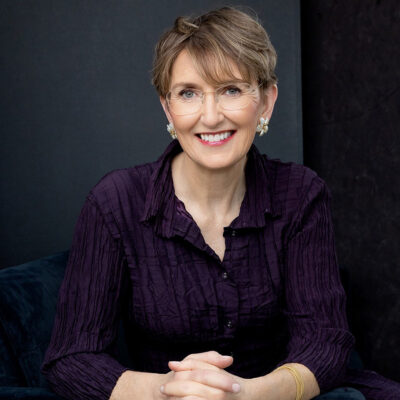Sometimes only a few degrees of separation stand between strangers and a lifelong friendship—and changing the world for the better.
This story of kismet goes back many years, to when Caroline Mortimer and Richard Grubman were neighbors of Dr. David G. Nathan in Cambridge, Mass. What began as friendly conversations over the fence, eventually grew into Nathan’s close relationship to the Mortimer/Grubman family. The enduring connection to Dana-Farber Cancer Institute includes Mortimer being treated for breast cancer in 2009, her late husband serving on the Dana-Farber Board of Trustees, and their family supporting multiple myeloma research, the Yawkey Center for Cancer Care, and other Institute priorities over the years. Despite an already long history, an equally meaningful chapter still lay ahead.
In addition to being president emeritus of Dana-Farber, Nathan is a consummate connector. One day last year he left Mortimer a voicemail about a brilliant Dana-Farber neuro-oncologist that she “had to meet”—Mariella Filbin, MD, PhD. Mortimer and Filbin’s chemistry was instant and serendipitous—from shared connections to Austria and an appreciation for early 20th century art, to a love of skiing. “I was immediately impressed with Mariella’s enthusiasm, expertise, and overwhelming commitment to finding treatments for children. That her work may benefit both children and adults was compelling,” says Mortimer. “We have unique connections on a personal level, but supporting Mariella’s professional work and the next generation of cancer researchers is my tribute to her determination to find effective treatment.”
That’s why Mortimer gave Dana-Farber $3 million to establish the Caroline Mortimer Fund for Pediatric Neuro-Oncology. This transformative gift has enabled Filbin to expand her lab, hiring additional brain tumor scientists and buying new spatial technology that can sequence single cells within the 2D and 3D structure of intact tumors. It has also increased the efficiency of processing fresh tumor tissue for immune and targeted therapy testing for all patients coming through the Childhood Brain Tumor Center that Filbin co-directs. “We haven’t improved the outcome of most malignant brain tumors in decades—now’s the time to do just that, and thanks to this fund we have the resources to make that a reality.”
When Nathan reflects on Mortimer’s generosity, he is optimistic about the potential philanthropic precedent and impact on the field. “Pediatric neuro-oncology is a vexing and vast issue that struggles to garner support,” he says. “I believe this gift will inspire other funders to invest in this important work.”
Filbin cannot imagine her career without Nathan, who has served as a mentor and extended family member for over 15 years—another commonality between her and Mortimer. Nathan’s lifelong dedication to solving cancer and building community has led to an incredible partnership that will improve the lives of patients, everywhere.
For more stories about the impact of philanthropy at Dana-Farber, please visit DanaFarberImpact.org.



